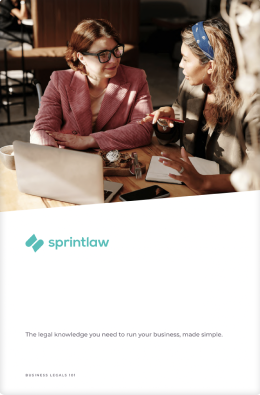Contents
What Is An Indigenous Corporation?
Before we get down into the technicalities of how to register an Indigenous corporation, it’s very helpful to know what it actually is.
An Indigenous corporation is an incorporated legal structure that is only available for Aboriginal and Torres Strait Islander organisations. In other words, non-Indigenous organisations may not incorporate as an Indigenous corporation.
Indigenous corporations are registered with the Office of the Registrar of Indigenous Corporations (ORIC) under the Corporations (Aboriginal and Torres Strait Islander) Act 2006 (CATSI Act).
Why Register As An Indigenous corporation?
An Indigenous corporation structure is not the only legal structure available to Indigenous businesses, so it is essential that you still research and consider other structures to make sure you adopt the most suitable option for your business.
Some advantages of incorporating as an Indigenous corporation include:
- Registering as an Indigenous corporation allows members to choose not to be liable for any debts the corporation incurs
- Aboriginal and Torres Strait Islander customs and traditions may be observed according to the company’s rule book
- Unlike other business structures, registering as an Indigenous corporation is free
- Indigenous corporations can apply to be exempt from producing annual reports
- Indigenous corporations can operate nationally and are not limited to the state or territory in which they are registered
- Indigenous corporations deal with a specialist regulator, the Office of the Registrar of Indigenous Corporations (ORIC), instead of ASIC
What Is The Office Of Registrar Of Indigenous Corporations (ORIC)?
ORIC plays a broader role than regulation and enforcement. They also provide other services and specialist support, such as:
- Workshops and training on good governance
- Assistance with drafting and developing your corporation’s rule book
- Help finding independent directors and recruiting senior staff
- Free job advertising
ORIC also provides free legal advice on various issues through LawHelp.
What Is The Indigenous Land And Sea Corporation (ILSC)?
The ILSC is a government body that aims to help Aboriginal and Torres Strait Islander people to acquire and manage land. The purchase of such essentially returns land and water rights (as well as other assets) to Indigenous Australians.
To read more about how they achieve economic, social and cultural benefits, visit their website.
How to Register An Indigenous Corporation
So you’ve decided that becoming an Indigenous corporation is the way to go. What’s next?
This section will take you through the main steps involved in registering your business under the CATSI Act. These steps are:
- Identifying your members
- Creating your rule book
- Satisfying the pre-incorporation requirement
- Checking for potential exemptions
- Lodging your application
Step 1. Identifying Your Members
When you register as an Indigenous corporation, you will need to provide ORIC with a register of members.
Members own the corporation and play a fundamental role in deciding how the corporation operates. They are responsible for making important decisions surrounding how the corporation is run, who the directors of the corporation are, how money is spent, and how the services it provides are managed.
The CATSI Act establishes three requirements around membership:
- Age: Each member of the corporation must be at least 15 years old
- Minimum number of members: In most cases, Indigenous corporations should have a minimum of 5 members. It is possible to apply for an exemption from this requirement, such as if you are a sole trader.
- Indigeneity:
- For corporations with more than 5 members, at least 51% of members must be Aboriginal or Torres Strait Islander
- For corporations with between 2-4 members, all members – or all but one member – must be Aboriginal or Torres Strait Islander
- Where there is only one member, that member must be Aboriginal or Torres Strait Islander
On top of these requirements, you will need to decide the eligibility rules for your own corporation and publish them in your rule book. It is important to note that you will need to obtain and maintain a copy of each person’s consent in writing to being a member of your corporation.
Step 2. Creating Your Rule Book
Indigenous corporations must have a rule book consented to by its members, which outlines how the corporation is conducted. When drafted well, your company’s rule book can be an important tool that ensures good governance.
A corporation rule book is generally made up of three main parts:
- Constitution: This section deals with matters specific to your corporation. This includes things such as the name, objectives, and membership eligibility for your corporation
- Set laws: These are rules outlined in the CATSI Act that apply to all Indigenous corporations and cannot be changed, unless an exemption has been granted by ORIC
- Replaceable rules: Your corporation can choose to accept the ‘replaceable rules’ as they appear in the CATSI Act, or modify them to better suit the needs of your corporation
Step 3. Satisfying The Pre-Incorporation Requirement
To show that you have fulfilled the pre-incorporation requirement, you will need to show that at least 75% of members have:
- Consented to the application to register as Indigenous corporation
- Approved the proposed rule book, including the application of any replaceable rules that are not addressed in the rule book
- Nominated the corporation’s secretary and director(s)
To prove that the pre-incorporation requirement has been met, it is important to provide the minutes from a pre-incorporation meeting or a signed document as evidence.
Step 4. Checking For Potential Exemptions
When drafting your rule book, you may have identified areas in which your corporation might find it hard to meet the requirements of the CATSI Act.
In certain situations, such as where you would like to have less than five members, you can apply to ORIC for an exemption. These will only be granted in circumstances where the Registrar is satisfied that the rule is inappropriate or unreasonable for your corporation.
Applications can be made by attaching a completed request form to your application.
Step 5. Lodging Your Application
You’ve prepared all the necessary documentation—congratulations! All you need to do now is press the ‘go’ button and lodge your application.
The easiest way to do this is to apply online here.
However, if you are unable to apply online, you can complete this form and send it to ORIC. There are different forms for existing organisations that wish to transfer their registration to become an Indigenous corporation, or amalgamating corporations, so it is important that you fill out the appropriate form. You can find all the forms for registering under the CATSI Act here.
What Support & Grants Are Available To Indigenous Corporations?
Starting a business is no mean feat, however additional support and assistance is available for Indigenous business owners.
Indigenous Business Australia (IBA) is a government organisation that provides workshops, advice and support, and even business finance to eligible Indigenous business owners. We’ve summarised some of the main financial grants that may be available to Indigenous corporations below.
Start-Up Finance Package
Who is it for? Small to medium-sized start-ups and businesses that have an annual turnover of less than $400,000 and have been trading for less than one year.
What is it? The Start-Up Finance Package comprises a grant component and a loan component.
What is covered by the grant component? Up to 30% of a new business loan to purchase assets for the business. The grant amount does not need to be repaid.
What is the maximum loan amount and loan term? $100,000, with a maximum loan term of seven years. Loan repayments are designed to suit the individual business, with low-interest rates and flexible terms available.
Procurement Loan
Who is it for? Businesses that have been given a contract through the Indigenous Procurement Policy (IPP) or other government programs.
What is it? The Procurement Loan aims to assist eligible businesses with upfront contract costs.
What is the maximum loan amount and loan term? $100,000, with a maximum loan term of two years. Loan repayments align with the contract to support customers in fulfilling their contractual obligations before receiving payment from the government.
Producer Offset Loan
Who is it for? Indigenous-owned production companies, Indigenous producers and directors. To be eligible for the Producer Offset Loan, you must qualify for a Producer Offset Rebate.
What is it? The Producer Offset Loan provides financial assistance for eligible Australian documentary, film or television projects. It aims to complement investment from Screen Australia and other state government film-funding agencies or broadcasters.
What is the maximum loan amount and loan term? $2,000,000, with a maximum loan term of two years.
Business Loan Package
Who is it for? Aboriginal and Torres Strait Islander peoples looking to start, grow or restructure their small business in Australia.
What is it? The Business Loan Package is provides assistance with working capital requirements, purchase of existing businesses, equipment, and other commercial assets.
What is the maximum loan amount and loan term? $5,000,000, with a maximum loan term of 20 years.
IBA also provides other forms of financial support, such as operational leases, invoice financing and performance bonds. You can read more about these options on the IBA website here.
Who Can Help Me Register My Indigenous Corporation?
Registering an Indigenous Corporation requires a specific process, but you don’t have to do it alone. Our lawyers are more than happy to help you.
We offer a Indigenous Corporation Registration package which includes the following:
- An initial consultation with a Sprintlaw lawyer to discuss your eligibility to be an Indigenous Corporation
- Any applicable exemptions
- Drafting a Rule Book for your organisation
- Answering any legal questions you might have
- Drafting your documents to maximise your chances
Need Help?
If you’d like additional support starting or growing your Indigenous corporation, or exploring what business structure is best for you, we’re here to help!
Get in contact with our team at team@sprintlaw.com.au or give us a call on 1800 730 617 for a free, no-obligations consultation.
Get in touch now!
We'll get back to you within 1 business day.












